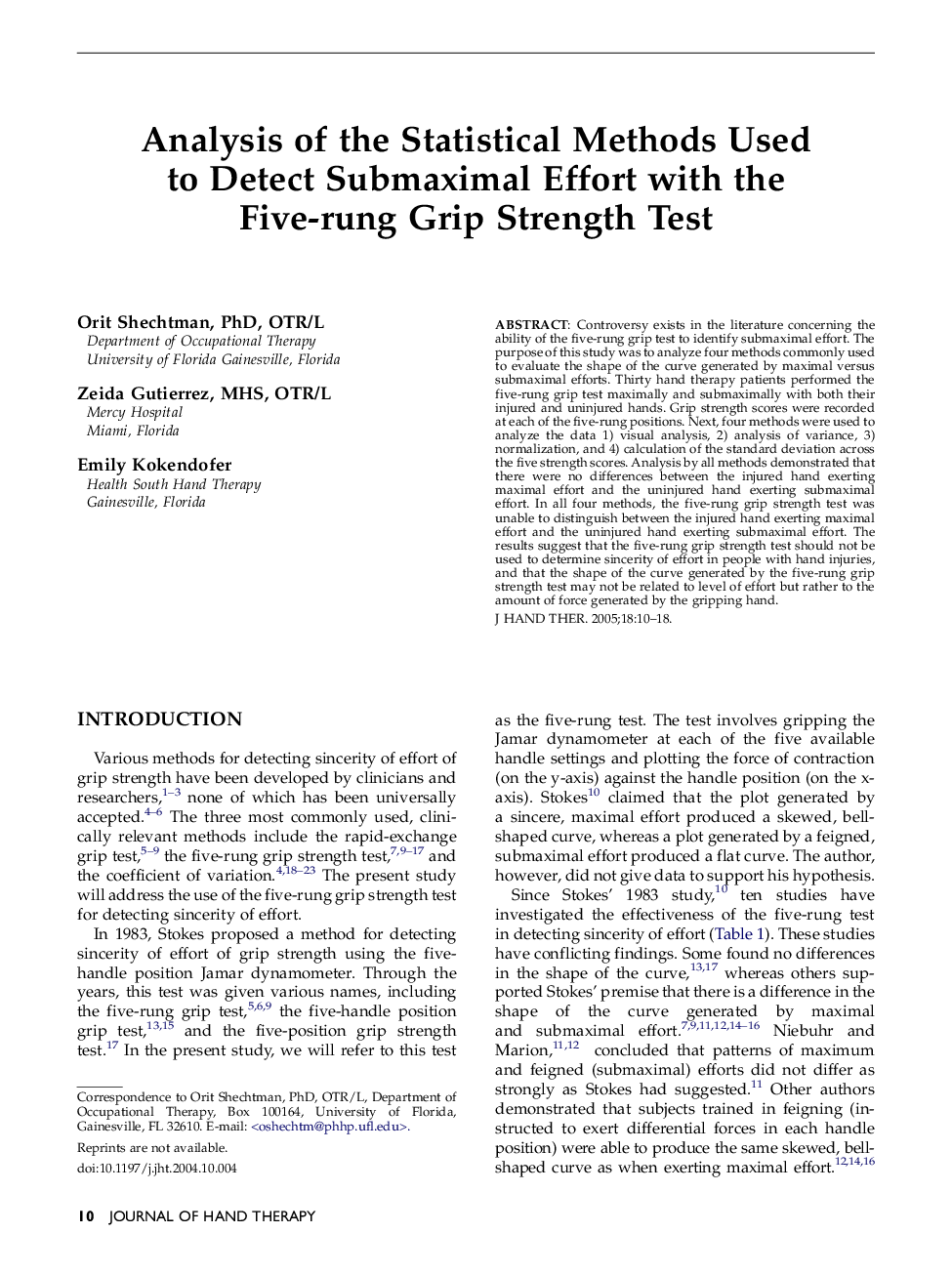| کد مقاله | کد نشریه | سال انتشار | مقاله انگلیسی | نسخه تمام متن |
|---|---|---|---|---|
| 9074216 | 1143341 | 2005 | 9 صفحه PDF | دانلود رایگان |
عنوان انگلیسی مقاله ISI
Analysis of the statistical methods used to detect submaximal effort with the five-rung grip strength test
دانلود مقاله + سفارش ترجمه
دانلود مقاله ISI انگلیسی
رایگان برای ایرانیان
موضوعات مرتبط
علوم پزشکی و سلامت
پزشکی و دندانپزشکی
ارتوپدی، پزشکی ورزشی و توانبخشی
پیش نمایش صفحه اول مقاله

چکیده انگلیسی
Controversy exists in the literature concerning the ability of the five-rung grip test to identify submaximal effort. The purpose of this study was to analyze four methods commonly used to evaluate the shape of the curve generated by maximal versus submaximal efforts. Thirty hand therapy patients performed the five-rung grip test maximally and submaximally with both their injured and uninjured hands. Grip strength scores were recorded at each of the five-rung positions. Next, four methods were used to analyze the data 1) visual analysis, 2) analysis of variance, 3) normalization, and 4) calculation of the standard deviation across the five strength scores. Analysis by all methods demonstrated that there were no differences between the injured hand exerting maximal effort and the uninjured hand exerting submaximal effort. In all four methods, the five-rung grip strength test was unable to distinguish between the injured hand exerting maximal effort and the uninjured hand exerting submaximal effort. The results suggest that the five-rung grip strength test should not be used to determine sincerity of effort in people with hand injuries, and that the shape of the curve generated by the five-rung grip strength test may not be related to level of effort but rather to the amount of force generated by the gripping hand.
ناشر
Database: Elsevier - ScienceDirect (ساینس دایرکت)
Journal: Journal of Hand Therapy - Volume 18, Issue 1, JanuaryâMarch 2005, Pages 10-18
Journal: Journal of Hand Therapy - Volume 18, Issue 1, JanuaryâMarch 2005, Pages 10-18
نویسندگان
Orit PhD, OTR/L, Zeida MHS, OTR/L, Emily Kokendofer,